#Ursus thibetanus
Text


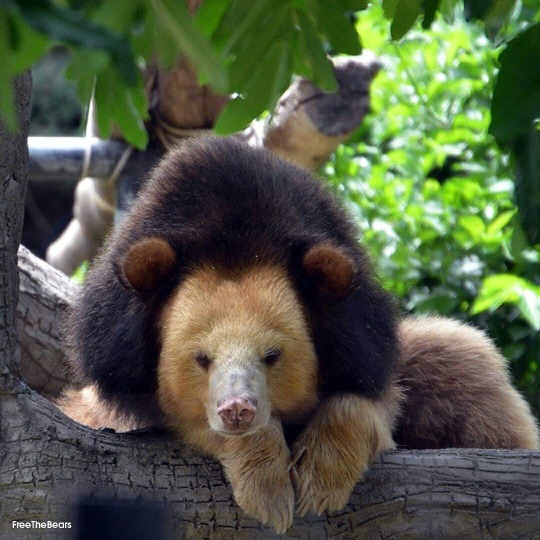
Golden moon bear (Ursus thibetanus)
#asian black bear#moon bear#bear#Ursus thibetanus#mammal#color mutation#I have no idea what kind of mutation#oddball#her name is brandy
9K notes
·
View notes
Text

Hey, y'all! It's Friday. The weekend has arrived. You made it another week. As your reward, here's an utter specimen, the absolute embodiment, the outright pinnacle of moon bear. Awe-inspiring.
[Moment of reverent silence.]
Anyway, you make your weekend amazing. Be cool. Be kind. Take care of each other.
----------------------------
The Himalayan black bear (Ursus thibetanus) is a rare subspecies of the Asiatic black bear. 26" by Shiv's fotografia is licensed under CC BY-SA 4.0.
#bear#friday#fridaybear#nature#cute#wildlife#animals#outdoors#friday bear#moon bear#himalayan black bear#asiatic black bear#Ursus thibetanus#collared bear
424 notes
·
View notes
Text

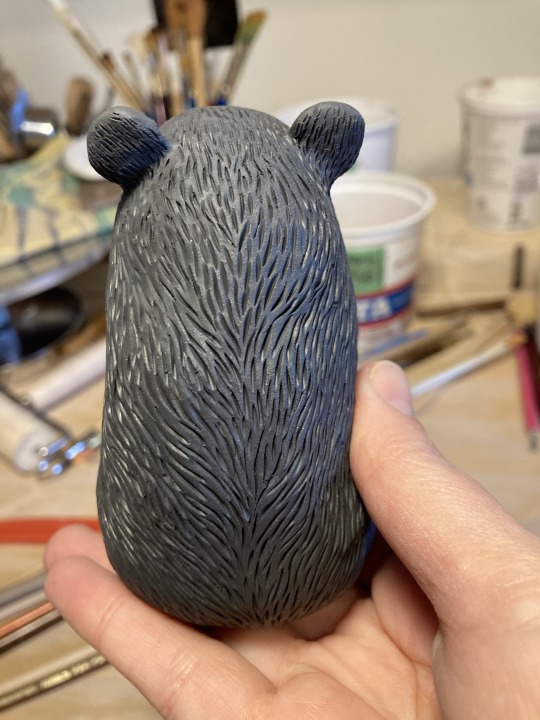


My public has asked for MORE BEARS!! and I must oblige! This is a moon bear because why should the North American bears have all the fun?!
#moon bear#Ursus thibetanus#artblog#ceramicsculpture#ceramicart#handbuiltceramics#sculptures#handbuiltsculpture#pottery#clay#stoneware#sculpting#sculpture#process#work in progress
1K notes
·
View notes
Text
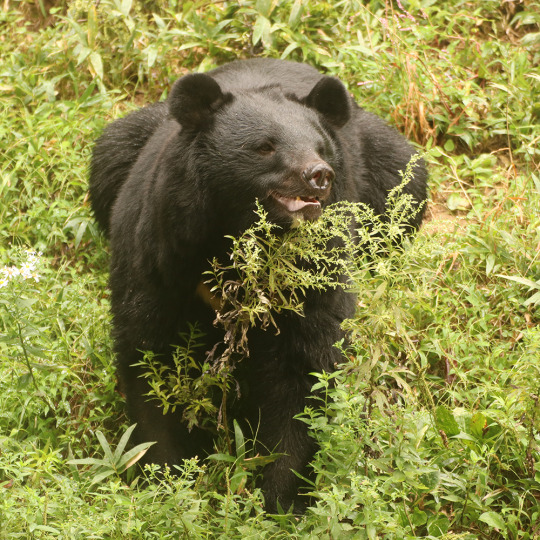




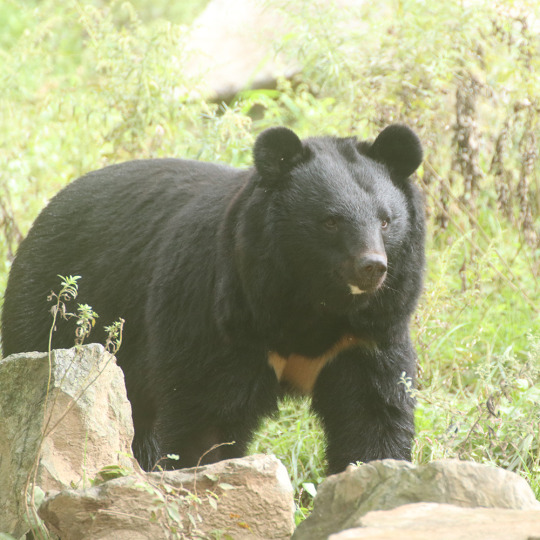
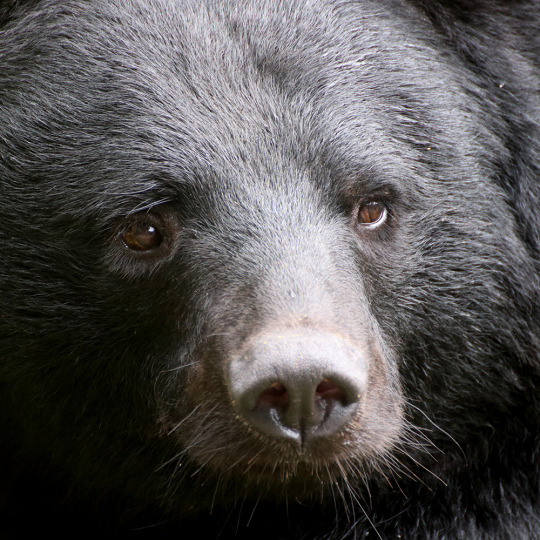
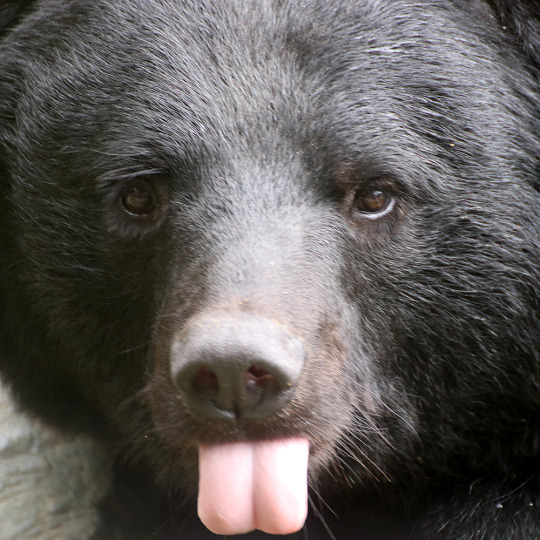
彼らもすごく楽しそうにしていた
@盛岡市動物公園
They also seemed to be having a lot of fun.
@Morioka Zoological Park
92 notes
·
View notes
Photo

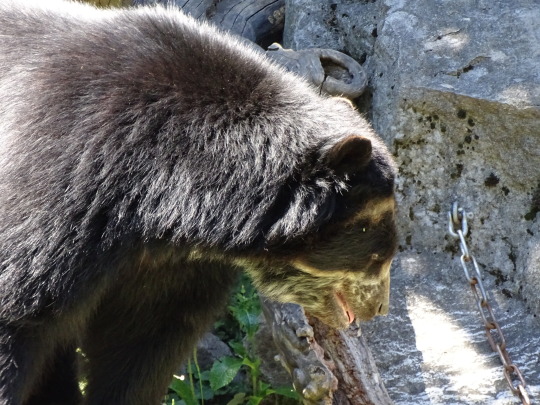





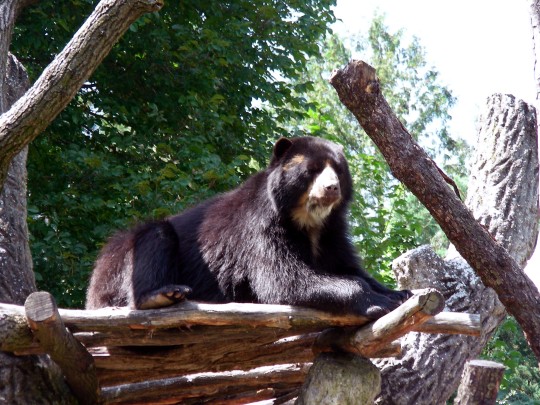
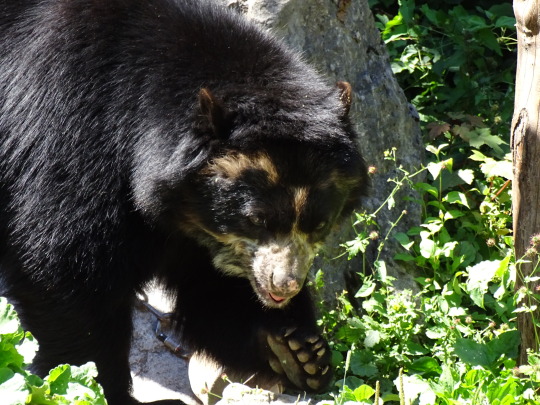

National Black Bear Day
It’s a ‘beary’ good day to celebrate National Black Bear Day on June 4 this year, which has been observed each year on the first Saturday in June for the sole pur-‘paws’ of teaching people about black bears and dispelling the myths surrounding them. This was the last pun, we promise. Just bear with us.
History of National Black Bear Day
Bears inhabited practically every continent when humans first made their way to North America. The grizzlies actually thrived in all western states, from Mexico to the tip of Alaska. The smaller black bear, a relative to the grizzly, was living in places as far-ranging as the Atlantic and the Pacific in North America, and Mexico to the northern edge of the continent. Since the black bear was a valuable source of thick hides for clothing and shelter, rich meat, and sweet fat for the Native Americans, we can see why they valued it and passed on the stories of these bears through their oral folktales.
The European settlers brought with them their fear of the wild and the animals that lived in it. These bears posed a threat to life, livestock, and crops and so they began killing them. Their fear made its way into popular children’s books at the time, which showed bears attacking hunters alongside other predators preying on their cattle. As is common with a human presence, forest land was wiped out to make space for open farmland, and the bears began losing their homes. The more the population expanded, the more black bears were killed for safety, food, or other purposes. Because they reproduced much slower than other mammals, the black bear population began to dwindle.
However, restoration programs and recovery of forest land saw their numbers go up again, with some states like New Jersey and Maryland reporting a five-fold increase. While these bears have not been able to reclaim their entire territory across North America, there is still a good number of black bears in the wild. In fact, they are listed as the least endangered species by the International Union for Conservation of Nature due to their large population. While the bear population is expanding, so is the human population, to the extent that the two are coexisting in many areas.
The North Carolina Black Bear Festival founded National Black Bear Day to celebrate America’s black bear while trying to raise awareness about this animal and dispel all the myths and fear surrounding it.
National Black Bear Day timeline
15,000 Years Ago The Humans Arrive
Humans enter North America for the first time — bears are all over the continent at this time.
1492 European Colonization Begins in America
While Norse colonies had already been established in North America, systematic European colonization begins in this year.
1900s Black Bear Numbers are Dwindling
The number of black bears in the wild is reduced to the point of extinction due to an explosion of human populations and habitat loss across America.
Mid-1900s Hunting is Regulated
People begin to recognize the importance of black bears — hunting seasons become heavily controlled or closed altogether and bear restoration programs begin in some states.
1980s–21st Century Black Bear Numbers Recover Rapidly
The black bear population increases 2% a year all over the continent due to reforestation, black bear reintroduction programs, and regulations on hunting black bears.
2002 Residents Like Black Bears
A mail survey done in New York State reveals a majority of residents enjoy having black bears in their state.
2018 Our Day is Here
National Black Bear Day is officially ordained as a celebration to be observed annually.
How To Celebrate National Black Bear Day
Learn more about the American black bear
Take a trip to see black bears
Learn about black bear attacks
National Black Bear Day is your chance to learn more about these magnificent animals and how you can coexist with them respectfully. Humans have a moral responsibility towards the conservation of nature and the animals that need it to survive. Learning more about this day, and the black bear, helps us realize what majestic creatures they are and how we only need to make a few minor adjustments to exist together.
Live near a national park or animal preserve that has a black bear population? Make a field trip out of it and see these animals up close and personal — just not too close. If you can’t physically visit these animals, there are plenty of global reserves and many in America that provide animal cams to view these animals online at any time. Take a minute to observe these cuddly creatures in their natural habitat.
Read up on what to do (and what not to do) in case of a black bear attack. For example, avoid feeding wild bears, don’t run or climb up trees if they chase you, and know that they usually always avoid humans unless they have no choice at all. They aren’t interested in eating humans — their food is 95% plant-based, although they do eat small animals like frogs and fish.
Fun Facts About National Black Bear Day
Bears, bears, everywhere!
Black bears are not always black
They are ‘super hibernators’
They can climb trees
North Carolina has the largest black bears
The black bear can be found in 41 of the 50 U.S. states, at an estimated number of 800,000.
They come in a range of colors, sometimes in the same litter, such as shades of cinnamon, blue/black, blue/grey, and, in rare instances, white.
In northern states, they can hibernate for up to eight months in the spring season but, in the southern regions, they hibernate for a shorter duration or not at all depending on food availability.
These super dexterous animals are sometimes more comfortable on a tree than on the ground.
According to black bear biologist Colleen Olfenbuttel, North Carolina’s coastal regions have the largest black bears on the planet, probably because they have access to high protein crops and enjoy mild winters.
Why We Love National Black Bear Day
We learn about nature’s gifts
It dispels myths about black bears
Avoid accidents
A day dedicated to the black bear is an amazing way to build awareness about this animal, its history, and how our actions impact it. The more we learn, the more we can help to conserve this gift from nature so future generations can enjoy it too.
If you see a black bear today, you shouldn’t scream and run for your life (they can outrun you easily), nor should you be ‘aww-ing’ and walking towards it. National Black Bear Day helps us understand the animals we share our nation with, and reduces our chances of causing damage to ourselves and the bears.
As you’ve read this article, you have probably learned more than you knew yesterday. That makes you more informed about bears than you previously were and, hopefully, wiser in terms of the ways in which to act around them. While this day works towards dispelling the scary myths about these animals, it also helps us avoid bear-related accidents by teaching us common rules to follow in the presence of a black bear.
Source
#Zolli#Zoo Basel#Zoo Zürich#Asian Black Bear#Zurich#daytrip#Ursus thibetanus#white-chested bear#moon bear#flora#fauna#tourist attraction#Sun bear#Helarctos malayanus#National Black Bear Day#first Saturday in June#4 June 2022#NationalBlackBearDay#outdoors#Schweiz#Switzerland#original photography#animal#tree#close up
0 notes
Text
moon bears are so cute anyways boy you are so circles

so nice you see him thrice

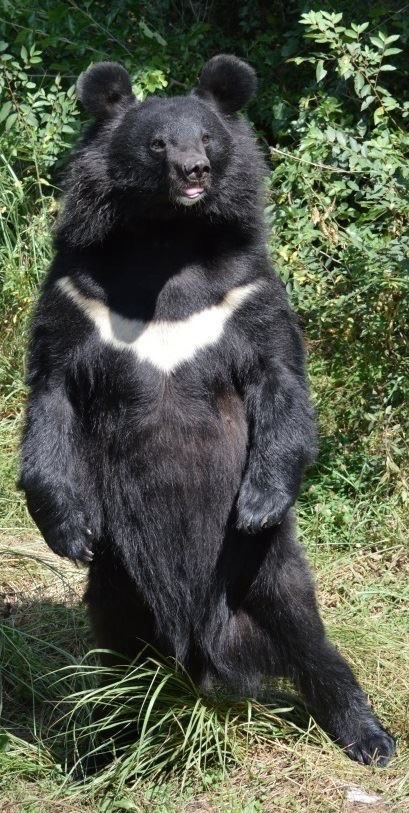

4 notes
·
View notes
Text
For #WorldBearDay:
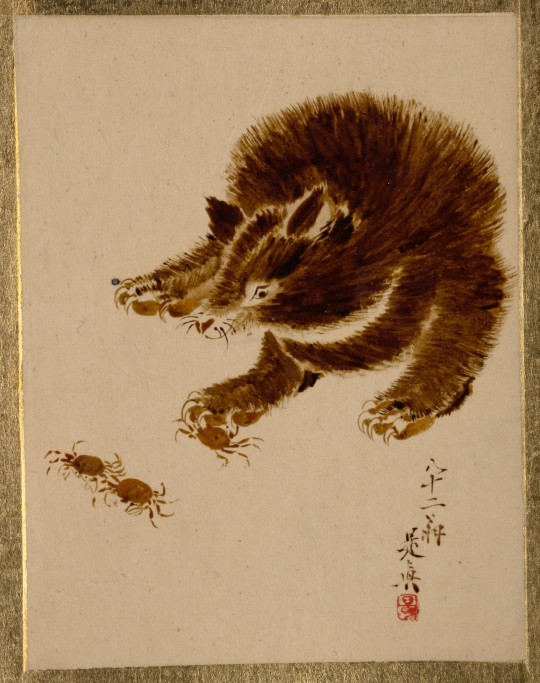
Bear and Crabs by Shibata Zeshin (1807-1891), Japan, Edo Period, c. 1889. Album leaf; lacquer on paper, 4 1/2 x 3 1/2 in. (11.4 x 8.9 cm). Signature on lower right reads Hachi juni wo Zeshin (Zeshin at the age of eighty-two). The Metropolitan Museum of Art, New York 36.100.125
This is a Japanese Black Bear (Ursus thibetanus japonicus), the endemic subspecies of the Asiatic Black Bear aka "Moon Bear" (note the white crescent on chest).
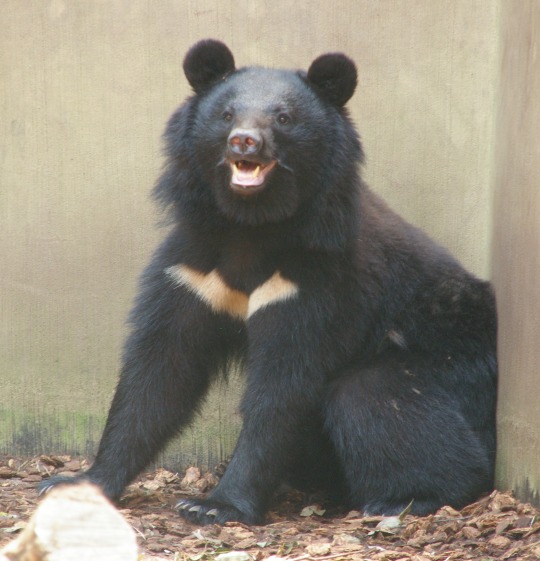
Japanese Black Bear at the Ueno Zoo, Tokyo, Japan. Image: Wikimedia Commons
#bear#bears#Asiatic Black Bear#Moon Bear#Japanese Black Bear#subspecies#mammalogy#zoology#Japanese art#East Asian art#Asian art#Metropolitan Museum of Art New York#Shibata Zeshin#Edo period#19th century art#works on paper#album leaf#lacquer#animal holiday#World Bear Day#animals in art
379 notes
·
View notes
Text
CoD The Other Good Guys Bear! Edition
What if the rest of the good guys in call of duty were bears? Part 2 - see Part 1 for 141 as bears
More bear facts! Cause bears are truly the best! 🐻💯
Alejandro: Mexican Grizzly Bear*
Ursus arctos nelsoni - now Ursus arctos horribilis

*depiction of what a mexican grizzly bear may have looked like alive
A now extinct subspecies of the grizzly bear that once inhabited northern Mexico. Due to its predation on cattle farms, they were considered pests and hunted by farmers. By the 1960s there were less than 30 individuals remaining. In 1974 the last known individual was shot in Sonora.
It was smaller than grizzly bears from the United states and Canada, and its colouration was said to range from a pale yellow to greyish-white with a darker undertone, though some individuals were described to be darker and reddish brown.
Due to its silvery fur, it was called 'el olso plateado' (the silvery bear) in Spanish, though it's name in the Ópatas language (an indigenous Mexican people's) was 'pissini'.
Rudy: Spectacled Bear "Andean Bear"
Tremarctos ornatus

The last remaining short-faced bear, native to the Andes Mountains in northern and western South America. Though all bears are omnivores, the spectacled bear has a mostly herbivorous diet with only 5-7% of their diet being meat.
The bear is named after it's distinctive eye markings, though not all spectacled bears may have such markings. Individuals can have highly variable fur patterns making it relatively easy to distinguish from one another.
It's short face and broad snout is thought to be an adaptation to a carnivorous diet despite it's herbivorous preferences.
Paddington Bear is said to be a Spectacled Bear from Peru.
Farah: Asian Black Bear "Moon Bear"
Ursus thibetanus
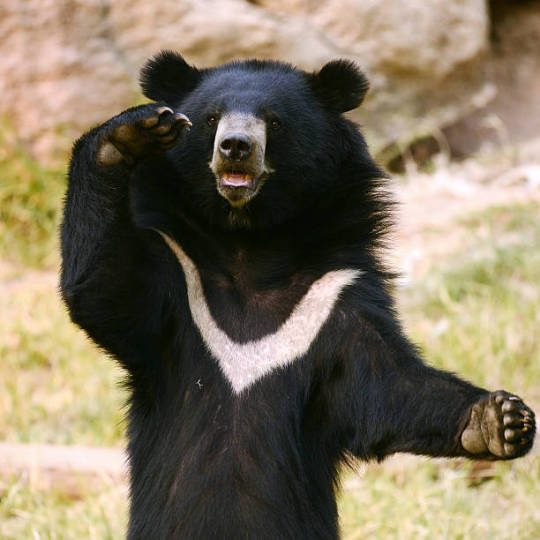
A medium sized bear native to Asia and highly adapted to arboreal life. It can be found in parts of Korea, China, Japan, eastern Russia, the Himalayas, southeastern Iran and northern India. It is listed as vulnerable due to deforestation and poaching for its body parts (used in traditional medicines).
The name 'moon bear' is given due to its distinctive creamy white cresent fur patch, though in some individuals it is "V" shaped. It has a powerful upper body stronger than it's lower limbs and are known to be the most bipedal of bears.
It has a reputation for extreme aggression despite their reclusive nature and there have been documented reports of unprovoked attacks. They are said to be more aggressive than the Eurasian Brown Bears that may cohabit the same areas and the American Black Bear.
Alex: American Black Bear
Ursus americanus

Alongside the Brown Bear, it is one of the only Bear species not threatened with extinction.
Despite living in North America, it is more closely related to the Asian Black Bear and Sun Bear than Grizzly Bears (North American Brown Bears) and Polar Bears. It's ancestors are thought to have split off from the Sun Bear.
Black Bears are distinguished from Grizzly Bears who may cohabit the same area, with their longer tall ears, straight face profile, shorter claws and lack of distinctive hump.
Teddy bears, Winnie-the-Pooh, and Smokey Bear are all inspired by the American Black Bear.
Nikolai: Polar Bear
Ursus maritimus
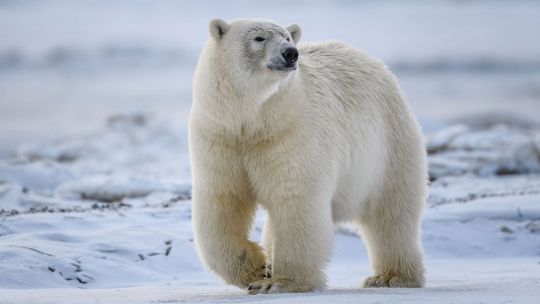
A large bear native to the Arctic. It is closely related to the Brown Bear and can hybridise with them though this is rare and not often seen. (See Grolar Bears)
They are the most carnivorous of all bear species (hypercarnivores), specialising in hunting seals through ambush attacks. Polar Bears are usually solitary but can be found in groups on land. They can form stable 'alliances' based on dominance hierarchies outside of breeding seasons with the largest males at the top.
It's common name was given in 1771, and was previously referred to as 'white bear', 'ice bear', 'sea bear', 'Greenland bear' in 13th - 18th century Europe. The Netsilik cultures (Inuit) named it 'nanook' and have several additional different names for them depending on sex and age of the polar bear.
Laswell: Kodiak Bear "Kodiak/Alaskan Brown Bear"
Ursus arctos middendorffi

Named after it's habitation of the Kodiak Archipelago in southwest Alaska, the Kodiak bear is the largest subspecies of Brown Bear, with some individuals comparable to the Polar Bear in size.
An island bear, it is 1.5-2x larger than it's mainland cousins the grizzly bear, though physically and physiologically, the two bears are very similar.
Due to its tendancy to feed in dense groups, it has thought to have developed more complex social behaviours (in comparison to mainland grizzly bears) to minimise infighting/fatalities via both verbal/ body posturing and social structures.
+
All info taken from wiki. Please let me know if ther any mistakes.
#cod mwii#cod mw2#call of duty modern warfare#cod mwiii#alejandro vargas#rudy parra#rudy cod#farah karim#farah cod#alex cod#nikolai cod#kate laswell#laswell cod#bears#bear facts
23 notes
·
View notes
Text
It that time again! Weekly Union Ranking time!
Whoops! Oh well! May the best union Ursus win!

(also cast your votes and reblog to help me with all the bears please, Im overrun)
#khux#kingdom hearts#kingdom hearts unchained x#kingdom hearts union cross#post s#poll#oh god oh fuck ursus everywhere#help me catch them#catch you vote to help
23 notes
·
View notes
Text
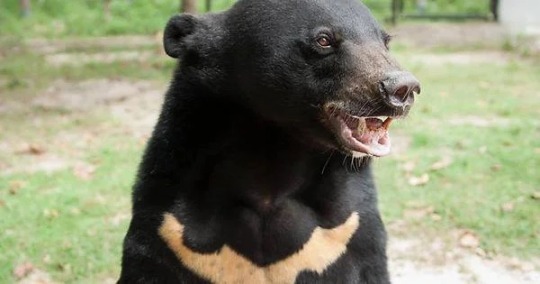
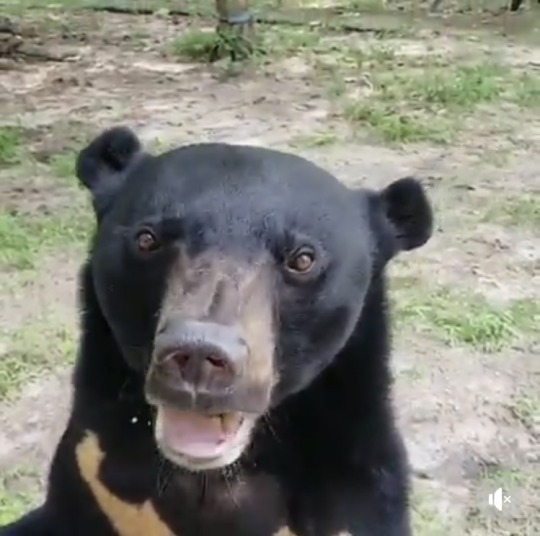


Sun bear (Helarctos malayanus) x Moon bear (Ursus thibetanus) hybrid
Sun and moon bear for comparison
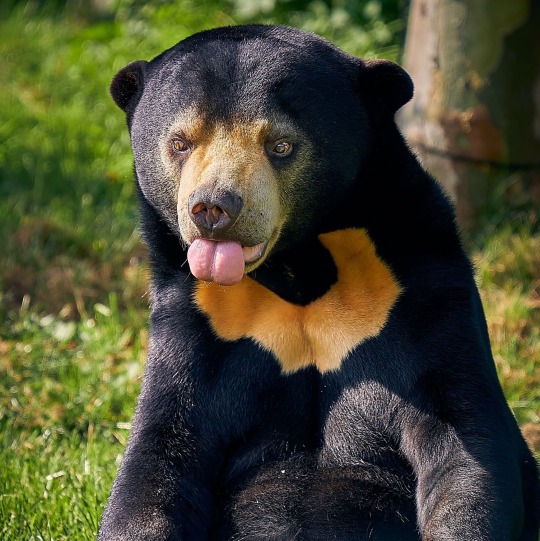

@ free the bears
#hybrid#sun bear#Helarctos malayanus#moon bear#asiatic black bear#Ursus thibetanus#bear#mammal#they could potentially have the coolest name#sun moon bear?#celestial bear?#the possibilities#his name is Tom Tom
550 notes
·
View notes
Text
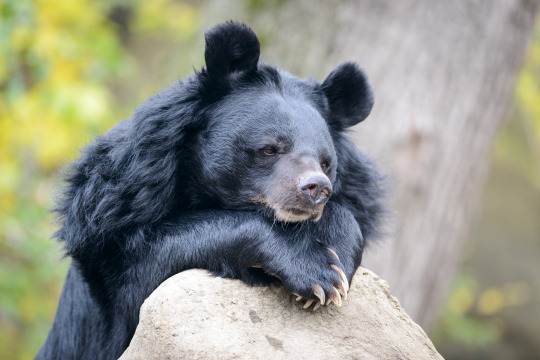
Thinkin' about Friday and wishing every day could be Friday.
Be good to people. Make your weekend great.
- - - - - - - -
"Moon Bear Portrait" by Eric Kilby is licensed under CC BY-SA 2.0.
#black bear#bear#friday#fridaybear#outdoors#wildlife#nature#cute#animals#blessed#wild#lions tigers and bears#animal rescue#teddy#moonbear#moon bear#asian black bear#white-chested bear#Ursus thibetanus
493 notes
·
View notes
Photo
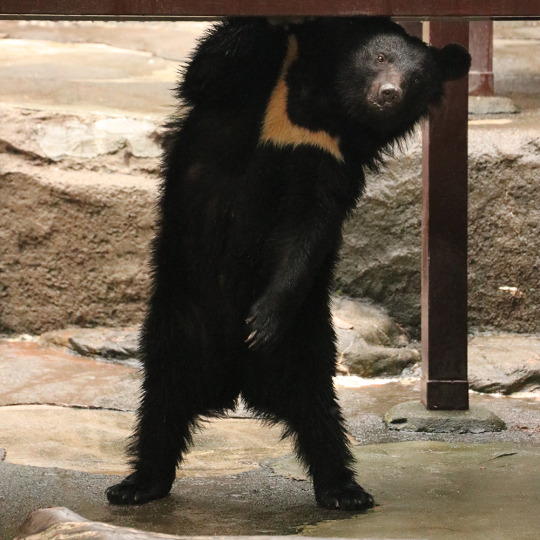
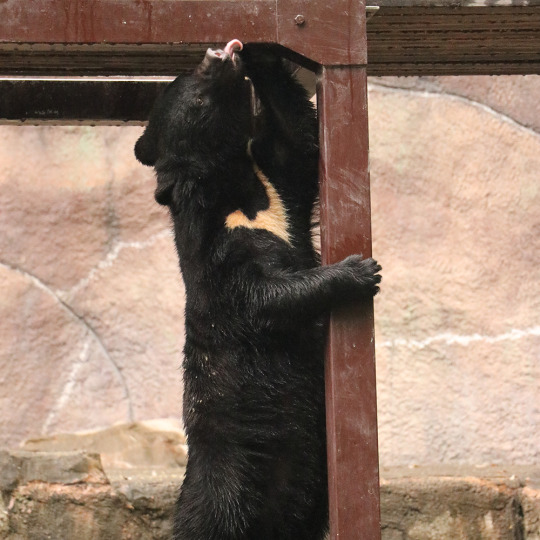
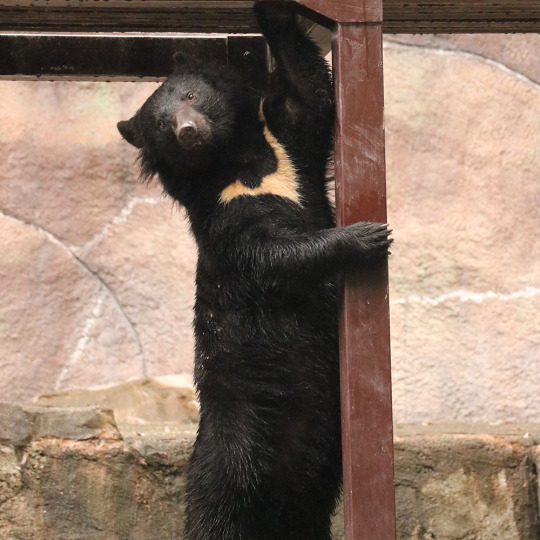

立つブームがあるようだった(ふたりともやっていた)
@浜松市動物園
260 notes
·
View notes
Text
SCP-8333 | Rikiya Katsukame

MASTER LIST
Content Warning: Bear?
== LEVEL 3 CLEARANCE REQUIRED ==
Access Granted
SCP-8333
▃▃▃▃▃▃▃▃▃▃▃▃▃▃▃▃▃▃▃
Item #: SCP-8333
Object Class: Euclid
Special Containment Procedures: SCP-8333 is to be kept in a 27sqm containment chamber with walls reaching at least 8m in height. The containment is environmentally regulated and fitted with reinforced concrete, the interior of which is painted to mimic the wilderness. It is also to be equipped with Class-A reinforced glass viewing windows. The containment’s door and viewing windows are to be equipped with emergency electrified security mesh capable of producing at least 6,000 volts.
The subject's containment is to be equipped with speciality made LED equipment to produce artificial sunlight. The subject is allowed grass and trees such as the artificially and genetically modified large Cryptomeria Japonica (Japanese Cedar) and Chamaecyaris Obtusa (Japanese Cypress) in the containment area. Personnel (D-Class) are required to maintain routine maintenance on all plant life growing in the subject’s containment.
To allow easier access for communication SCP-8333 is granted access to multiple labeled buttons placed on the ground that are equipped with pre-recorded sounds of the basic hiragana lettering system to allow for the subject to freely express thoughts, as well as pre-recorded voice lines:
“Yes”
“No”
“Hello”
“Goodbye”
“Hungry”
“Tired”
“Angry”
“Sad”
“Happy”
“Sick”
“Thank You”
“Doctor”
In light of incident 8333.1 and Addendum 8333-03: Multiple appropriately sized containers are to be placed into the subject's containment. No personnel are to attempt to remove the container placed on SCP-8333’s head. There’s nothing under the container and any personnel that attempt to remove the object are forced to endure whatever hell SCP-8333 subjects them to.
[Hastily scribbled on the page is the following]
DO NOT ATTEMPT TO REMOVE THE BUCKET FROM SCP-8333’S HEAD
Description: SCP-8333 is an anomalous member of the Ursus thibetanus (Asian black bear) family, wearing a bucket that covers its face. The subject exhibits some abnormalities that sets it apart from resembling that of a non-anomalous black bear:
Weights roughly 220kg
Grossly enlarged muscle mass three (3) times that of standard black bear with the ability to move objects over 450kgs with a single paw
Ability to run up to 80kph
Bite Force of over 1000 psi
Ability to see surroundings effectively despite its face being covered
It appears to have a heightened sense of intelligence with the ability to follow commands given to it without training, memorize patterns and locations, and understanding human speech. It displays similar behavior to non-anomalous bears, subsisting on a diet of fish, scavenged or hunted game animals, and vegetation, and hibernates during winter months. SCP-8333’s diet should be similar to that of a non-anomalous black bear.
Following incident 8333.2, the subject appears to be easily depressed and will often use the buttons in its enclosure to say “Sad” followed by “Doctor REDACTED”. No personnel are to mention anything involving SCP-8320-1, formerly known as Dr. REDACTED, to the subject. SCP-8333 can be easily distracted with the introduction of rubber bouncy balls, which should be used if the subject refuses to move for more than two (2) hours.
Addendum 8333-01: Discovery
Subject was located ████/██/██ by █████ ██████ after encountering SCP-8333 in the forest located in ██████. They had taken a shaky video of the subject and posted it online where it became viral as a cryptozoology example. Following the success of the video, multiple people had discovered the location, due to confirmation by the original poster, and had traveled out to collect more evidence of the subject. Investigators had managed to locate SCP-8333 before the lives of the civilians investigating the subject had been put in danger. After SCP-8333 was taken into containment, appropriate personnel had made sure that it appeared like a fabricated video and nothing more than a strange non-anomalous black bear.
Addendum 8333-02: Interview Log #002
DATE: ████/██/██
INTERVIEWER: Dr. Chisaki
SUBJECT: 8333
▃▃▃▃▃▃▃▃▃▃▃▃▃▃▃▃▃▃▃
[BEGIN LOG]
Dr. Chisaki: (gestures to the buttons on the ground) These are to help you communicate since you are able to understand human speech. Give it a try.
SCP-8333 walks over and presses each button before looking at Dr. Chisaki.
Dr. Chisaki: Can you read the labels?
SCP-8333: “No”
Dr. Chisaki: Best to familiarize yourself with the location of each button then to make it easier to communicate with us.
SCP-8333: “Thank you, Doctor”
[END LOG]
Addendum 8333-03: Notes regarding the subject
The bucket placed on SCP-8333’s head seemed to be done on purpose by the subject. SCP-8333 will remove the bucket to eat but will face away from personnel or the camera recording devices. Any personnel that try to move towards the subject with the expressed purpose being to remove the object, SCP-8333 immediately becomes hostile. Other objects have been placed in SCP-8333’s containment and it appears that the subject will trade out its bucket for one of the other objects but it seems to have a preference for the bucket.
Addendum 8333-04: ████/██/██ Incident
Incident Report 8333.1
DATE: ████/██/██
LOCATION: [DATA EXPUNGED]
MTF Sigma-10 (“Vanguard”) was alerted to SCP-8333’s containment after two (2) D-Class personnel were killed after being sent in for a scheduled feeding. Lead Researcher ██████ had requested that one (1) of the D-Class personnel attempt to ask SCP-8333 if they could remove the bucket for the subject. SCP-8333 shook its head and D-█████ had then attempted to remove the bucket by force. This enraged SCP-8333 who easily and quickly killed both D-Class personnel. SCP-8333 had walked over to its set of buttons and pressed “No” repeatedly before pressing out buttons to say “Won’t hurt any people if they don’t touch” and remained in the farthest corner away from the door. MTF members declared this to require none of their services and left SCP-8333 alone, with appropriate personnel called in to clean up the remaining mess left behind.
Addendum 8333-05: Interview Log #003
DATE: ████/██/██
INTERVIEWER: Dr. Chisaki
SUBJECT: 8333
▃▃▃▃▃▃▃▃▃▃▃▃▃▃▃▃▃▃▃
[BEGIN LOG]
Dr. Chisaki: Now that you have effectively communicated with personnel for a day on what you wanted to eat, I think it’s safe to say that you know how to use the buttons.
SCP-8333 nods its head, the bucket placed over its face and was noted to not move despite gravity that should be affecting it.
SCP-8333: “Thank you, Doctor”
Dr. Chisaki: You’re welcome but I did have a request for you today.
SCP-8333: “Pain”
Dr. Chisaki: No pain. I want to know why you refuse to let personnel remove the bucket on your head. You seem to remove it to eat and place it back on. You hide your face. Why is that?
SCP-8333: “No see”
Dr. Chisaki: Is it dangerous?
SCP-8333: “No see”
SCP-8333 looks towards Dr. Chisaki before lifting a paw to point towards him before pointing at the bucket on its head.
SCP-8333: “Send people to take”
Dr. Chisaki: The D-Class that attempted to take the bucket off of your head were under orders from Lead Researcher ██████, not me.
SCP-8333: “Doctor no tell people to take Doctor good”
Dr. Chisaki: I will tell Lead Researcher ██████ that they’re no longer allowed to make any attempts to have it removed.
SCP-8333: “Thank you”
[END LOG]
Addendum 8333-06: Interview Log #008
DATE: ████/██/██
INTERVIEWER: Dr. Chisaki
SUBJECT: 8333
▃▃▃▃▃▃▃▃▃▃▃▃▃▃▃▃▃▃▃
[BEGIN LOG]
Dr. Chisaki: I heard from the personnel that you requested for me?
SCP-8333: “Yes” (pats ground with paw) “Doctor Chisaki”
Dr. Chisaki: Alright, did you have a question for me?
SCP-8333: “People ask about” (uses paw to point at bucket) “Only Doctor Chisaki can”
Dr. Chisaki: You’ll allow me to remove the bucket?
SCP-8333: “Yes Only short time”
Dr. Chisaki: Temporarily? Of course. I know it’s comforting to you.
SCP-8333: “Yes”
Dr. Chisaki: Can I do it now? I’ll make sure no one else can see.
SCP-8333: “Yes”
Dr. Chisaki moves closer to SCP-8333 after having turned the subject away from other personnel viewing as well as any cameras. Dr. Chisaki slowly removes the bucket off of SCP-8333, his eyes go blank. SCP-8333 puts the bucket back onto its own head and Dr. Chisaki appears to regain composure.
[End Log]
Addendum 8333-06: Notes concerning Interview Log #008
Following Dr. Chisaki’s interview with SCP-8333, he had left the containment and seemed out of character. When confronted by personnel, including Lead Researcher ██████ on what he saw he only responded with “No.” After roughly one (1) hour he was able to return back to normal but everytime someone brought up what he saw regarding SCP-8333’s face, he only responded with “No.” Dr. Chisaki had requested access to SCP-8333’s file where he made additions to warn all personnel not to remove any object on SCP-8333’s head covering its face.
WARNING: THE FOLLOWING SECTION IS LEVEL 5/8333 CLASSIFIED
▃▃▃▃▃▃▃▃▃▃▃▃▃▃▃▃▃▃▃
ANY ATTEMPT TO ACCESS THIS SECTION WITHOUT LEVEL 5/8333 AUTHORIZATION WILL BE LOGGED AND WILL LEAD TO IMMEDIATE DISCIPLINARY ACTION.
== LEVEL 5 CLEARANCE REQUIRED ==
▃▃▃▃▃▃▃▃▃▃▃▃▃▃▃▃▃▃▃
Access Granted
Addendum 8333-07: ████/██/██ Incident
Incident Report 8333.2
DATE: ████/██/██
LOCATION: [DATA EXPUNGED]
MTF Sigma-10 (“Vanguard”) was alerted to a casualty event, centering on SCP-8320’s enclosure that led into a mass breakout of multiple SCPs led by SCP-8320-1. SCP-8333 was the second SCP released by SCP-8320-1 and was the accomplice to multiple other enclosures being opened throughout the incident. It was noted that SCP-8333 was violently loyal to SCP-8320-1 and attempted to kill any MTF members trying to subdue them. It is believed that because of SCP-8333’s positive interactions with SCP-8320-1’s former self, Dr. Chisaki, that the subject had felt the need to protect and serve them.
SCP-8333 was responsible for the murder of ten (10) MTF members, over twenty-five (25) D-Class personnel, as well as Lead Researcher ██████ (who worked on SCP-8333) during this incident. The subject was able to be heavily sedated once discovered, which helped MTF members in the capture of SCP-8320-1. SCP-8333 was able to be successfully recontained after its enclosure was repaired.
#rikiya katsukame#SCP AU#bnha fanfiction#bnha#my hero academia#shie hassaikai#eight bullets#kai chisaki#overhaul#BEAR
5 notes
·
View notes
Text
Of the eight species of bears, only three species are found in more than five countries, and only two are found in more than eight
The top two are both found in more than double that, with the moon bear in eighteen countries and brown bear in thirty seven
Giant panda (Ailuropoda melanoleuca): China (1)
Black bear (Ursus anericanus): Canada, the US, and Mexico (3)
Polar bear (Ursus maritimus): Greenland, Canada, the US, and Russia (4)
Sloth bear (Melursus ursinus): Sri Lanka, India, Nepal, and Bangladesh (4)
Spectacled bear (Tremarctos ornatus): Colombia, Venezuela, Ecuador, Peru, and Bolivia (5)
Sun bear (Helarctos malayanus): India, Bangladesh, Burma, Thailand, Laos, Kambodia, Vietnam, Indonesia, and Malaysia (8)
Moon bear (Ursus thibetanus): Iran, Afghanistan, Pakistan, India, Nepal, Bhutan, Bangladesh, Burma, Thailand, Laos, Kambodia, Vietnam, Taiwan, China, Russia, North Korea, South Korea, and Japan (18)
Brown bear (Ursus arctos): Spain, France, Italy, Austria, Slovenia, Croatia, Greece, Bulgaria, Romania, Ukraine, Slovakia, Belarus, Latvia, Lithuania, Sweden, Norway, Finland, Russia, Georgia, Azerbaijan, Armenia, Iraq, Iran, Turkmenistan, Kazakhstan, Uzbekistan, Kirjizstan, Tajikistan, Afghanistan, Pakistan, India, Nepal, Bhutan, China, Mongolia, North Korea, and Japan (37)
#original broth#i love bears so fucking mich#brown bear#black bear#moon bear#polar bear#sun bear#sloth bear#spectacled bear#giant panda#bear animal#data
1 note
·
View note
Text
Ville rovdyr

league-scientifique - 2 years ago
Ekte eventyr er de facto foreslått i navnet på bevaring av sjeldne rovdyr i Kina. Vi er på sporet av karismatiske rovdyr, fra mustelider opp til ville hunder som huser ville regioner i Sentral-Kina. Gjør en forskjell for å styrke bevaringsfamaen til innfødt dyreliv. La oss gjennomføre banebrytende prosjekt for å forstå sjeldne arter som dhole Cuon alpinus og grevling Arctonyx sp. , asiatisk bjørn Ursus thibetanus og weasels Mustela sibirica med alle registrert fra vill Hupeh, f.eks. Shennongjia Evergreen Forest og innenfor reservatene til økosystemet til Daba Massif. Mer forskning er nødvendig for å forstå populasjoner av Melogale sp. og uidentifiserte mårarter. Sentral-Kina-fjellene representerer potensielle siste tilfluktssteder for ville hundedyr som revlignende skapninger, som er ukjent for vitenskapen og sjeldne mustelidae nevnt tidligere. Flott jobb ville være å avsløre naturen til katter som gullkatten Catopuma temminicki og civets som Paguma larvata. Vi kan også jobbe med andre pattedyr fra endemiske aper, via leporider og relikviegnagere. Etterpå kan økologi- og bevaringsprosjekt for ville hunder være banebrytende for dette landskapet og kinesisk mammalogi. Ytterligere prosjekter settes pris på. Men det vi trenger å bevare for fremtidige generasjoner er natur- og kulturarven i denne delen av Czung Kuo er innovativt samarbeid. På den arkaiske basaren leter vi etter etnozoologiske gjenstander. En annen utfordring er å dempe konflikter mellom dyreliv og mennesker i ville økosystemer. Notabene, så vidt vi vet er det nødvendig med flere studier, men science fiction fyller kanskje noen huller. La oss gjennomføre milepælsaktivitet innen naturressursforvaltning i naturområdene Hupeh, Chongqing og Henan. Lagt ut av lisensiert biolog og pro-vitenskapelig forfatter Tomasz Pietrzak som @gnhi-prosjekt. Kontakt med forfatter på echl.league.scientifc på gmail.com. Lagt ut under Creative Commons License.
link>https://www.sporenbiolog.no/Topic/Posts/143942

1 note
·
View note
Text
Asian black bear
"The Asian black bear (Ursus thibetanus), also known as the Asiatic black bear, moon bear and white-chested bear, is a medium-sized bear species native to Asia that is largely adapted to an arboreal lifestyle"
#forever queued#animals#mammals#zoology#black bear#asian black bear#moon bear#white chested bear#bears
1 note
·
View note